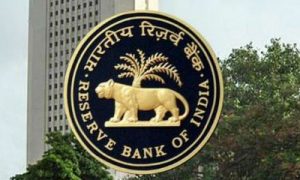Capital assets, money or stock in trade received by a partner in a partnership firm while its dissolution or reconstruction would be considered as a deemed transfer and profits of gains will be taxed
New Delhi: The Central Board of Direct Taxes (CBDT) has issued a set of guidelines to be applied in determining tax liability in cases where partnership firms are restructured or dissolved.
CBDT has said that capital assets, money or stock in trade received by a partner in a partnership firm while its dissolution or reconstruction would be considered as a deemed transfer and profits of gains arising from the transfer would be subject to income tax.
The guidelines seek to bring clarity on the methods to be followed while computing tax liability after the Finance Act, 2021, introduced a new section 9B in the Income
Tax Act and substituted another provision – 4 of section 45.
Read More ; Income Tax Alert: Prefilled ITRs, Faceless Assessment, Faceless Appeals Schemes; Check Details
The changes are applicable from assessment year 2021-22. These sections deal with deemed transfer of a capital asset or stock in trade to an exiting partner of a firm and receipt of capital asset or funds by a partner from a firm. The Finance Act specifies that any profits and gains arising from such deemed transfer is treated as the income of the partnership.
The CBDT, in a circular, said guidelines were issued under provisions meant to remove difficulty in implementation. The guidelines clarify the methodology for attribution of income of an entity on its reconstitution and gives examples of situations where a partner exits a firm and the organisation settles the capital balance.
Section 9B provides for taxation of income of the firm on the transfer of capital assets & stock in trade whereas Section 45(4) now provides for taxation of income in the hands of the firm which is actually the income in the hands of the partner.
The CBDT noticed that the amount taxed under sub-section (4) of section 45 of the Act is required to be attributed to the remaining capital assets of the specified entity so that when such capital get transferred in the future, the amount attributed to such capital assets gets reduced from the value of the consideration and to that extent the specified entity does not pay tax again on the amount.
This attribution is given in the Act only for the purposes of 48 of the Act. Section 48 of the Act only applies to capital assets that are forming a block of assets. For capital assets forming a block of assets, there is sub-clause (c) of clause of section 43 of the Act to determine the written down value of the block of asset and section 50 of the Act to determine the capital gains arising on transfer of such assets.
However, the Act has not provided that the amount taxed under sub-section (4) of section 45 of the Act can also be attributed to capital assets forming part of a block of assets and which are covered by these two provisions.



































